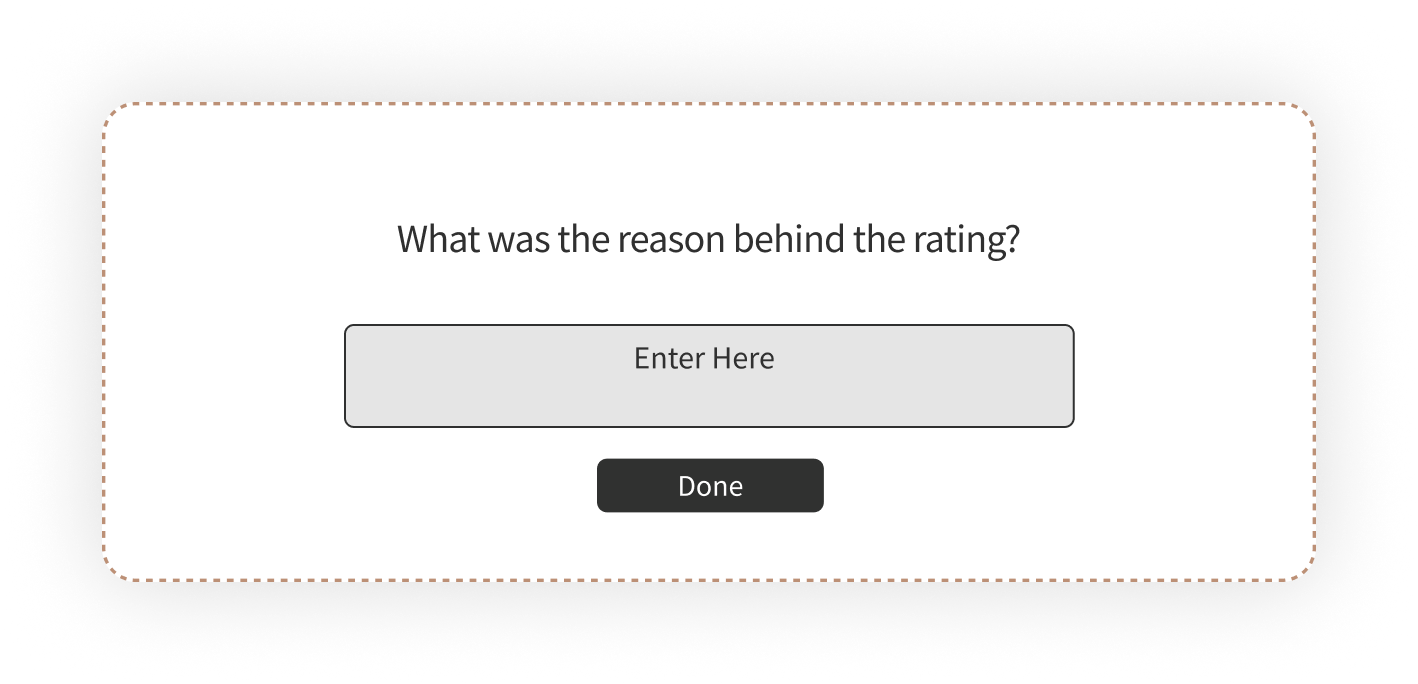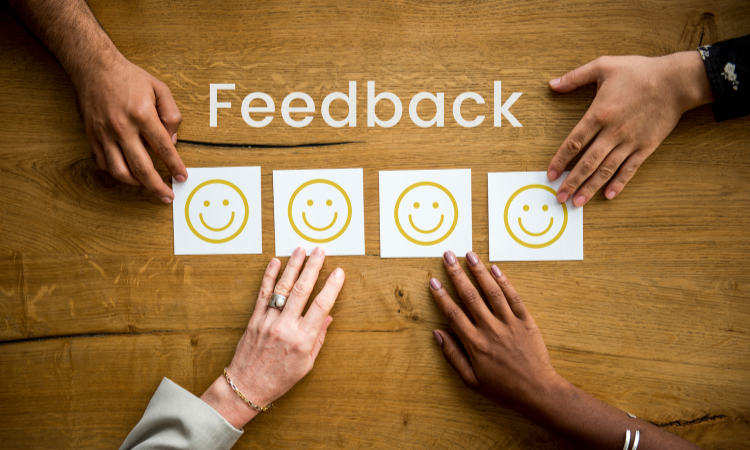Collecting feedback using customer feedback software is essential for any business to know how your customers feel about the experience you provide them. Various types of surveys are used to gauge customer satisfaction and improve the experience. And when you want to measure them in quantitative terms, opinion rating scale surveys are one of the best options.
Rating scale surveys or opinion scale surveys let you know how your customers rate the experience you provide them in a quantitative manner. In this article, we will explore more about 1 to 10 rating scale surveys, their uses, and some smart tips to use them. Let's get started!
TL;DR
-
A 1 to 10 rating scale is a numerical scale where respondents choose a number between 1 and 10 to indicate their sentiment, with 1 being the lowest and 10 being the highest.
-
It's used in various industries like SaaS for feature prioritization, eCommerce to identify top products, and healthcare for patient satisfaction.
-
The 1 to 10 rating scale survey measures customer loyalty with NPS, gauges satisfaction, analyzes product experience, evaluates employee performance, and supports market research.
-
To maximize the impact of a 1 to 10 rating survey, avoid double-barreled questions, include follow-up questions, send surveys at the optimal time, and utilize skip logic and branching.
-
Zonka Feedback is an effective survey software that helps you create 1-10 rating surveys, analyze responses, and take action to close the feedback loop. You can schedule a demo to know more about the product.
Send your 1 to 10 Rating Scale Survey🔥
Choose from over 30+ question types, add your own themes, and create amazing surveys that people love answering.

What is a Rating Scale Survey?
A survey rating scale collects data by asking respondents to rate their experiences, preferences, attitudes, or opinions on a predefined scale. This scale often consists of a series of statements or items to which respondents provide a numerical rating, commonly ranging from 1 to 10. These surveys are commonly used to gather feedback on Customer Satisfaction, Net Promoter Score (NPS), Customer Effort Score (CES), and other metrics.
While many consider rating scale surveys to be purely quantitative, they can also be descriptive. In a survey rating scale 1-10, respondents choose a score between 1 and 10 to rate their experience, with 10 indicating the most positive and one (or zero) indicating the most negative.
Below, we have given quick 1-10 rating scale descriptions by breaking down each rating.
1: Strongly disagree, very dissatisfied, or strongly negative opinion
2: Disagree, dissatisfied, or negative opinion
3: Somewhat disagree or slightly dissatisfied
4: Neutral or neither agree nor disagree
5: Somewhat agree or slightly satisfied
6: Agree, satisfied, or have a positive opinion
7: Strongly agree, very satisfied, or strongly positive opinion
8: Extremely agree or extremely satisfied
9: Exceptionally agree or exceptionally satisfied
10: Completely agree, completely satisfied, or the highest positive opinion
If you are planning to collect feedback with this survey, here is a sample 1-10 rating scale survey template that you can use to collect a quantitative opinion of your users for your company.
1 to 10 Rating Scale Questions for Different Industries
The 1 to 10 rating scale can be used across industries to collect feedback and make necessary improvements. In SaaS, it can be used to calculate customer satisfaction and identify areas for product enhancement, while in retail, it can help in evaluating the shopping experience and gauging product popularity.
With its wide usage, let us look at the different industries where 1 to 10 rating scale surveys can be used.
1. SaaS and Technology
The 1 to 10 rating scale is instrumental in SaaS and technology industries for gauging customer satisfaction, prioritizing feature development, and evaluating the effectiveness of customer support. It helps companies identify areas of improvement and make data-driven decisions to enhance their products and services.
-
On a scale of 1-10, how satisfied are you with the ease of use of our software?
-
How satisfied are you with our customer support team?
-
How likely are you to renew your subscription with us? (1 = Not at all, 10 = Completely)
-
On a scale of 1 to 10, please rate the frequency of updates and new features.

Real Life Example: Simpl
Simpl was struggling to collect feedback from its customers, hindering its ability to understand customer needs and make improvements to its services.
By implementing Zonka Feedback, Simpl gained a user-friendly platform to collect feedback from their customers through email and SMS. They leveraged different survey types and questions like 1-10 rating questions, NPS surveys, and more to gather feedback. Following the integration, it embarked on a transformative journey that revolutionized its customer experience by collecting and acting on feedback from a large user base.
2. eCommerce
In eCommerce, customers rely on product reviews to gauge quality and make informed decisions. The 1 to 10 rating scale can help online retailers identify top-performing products and highlight positive customer experiences. This can boost sales and conversions and provide valuable insights for optimizing the online shopping journey.
-
On a scale of 1-10, how satisfied are you with the variety of products available?
-
How likely are you to recommend our product to others? (1 = Extremely Likely, Not at all Likely = 10)
-
On a scale of 1-10, how would you rate the checkout process?
-
How satisfied are you with the delivery time of your orders? (1 = Extremely Satisfied, Not at all Satisfied= 10)

Real Life Example: Zappfresh
Zappfresh utilized Zonka Feedback to enhance its online service by implementing SMS and online surveys. It collected real-time customer feedback through closed-ended questions like a 1-10 rating scale and open-ended survey questions following online purchases. This allowed them to gauge customer satisfaction levels accurately, leading to targeted improvements and an enhanced overall customer experience.
3. Healthcare
The healthcare industry benefits from the 1 to 10 rating scale by measuring patient satisfaction, assessing the quality of care, and identifying areas for improvement in service delivery. It helps healthcare providers understand patient needs better and enhance overall patient experience.
-
Rate the clarity of information provided by our healthcare professionals measured on a 1 to 10 scale.
-
Please rate the cleanliness of our facilities on a 1-10 scale.
-
How satisfied are you with the communication from our healthcare team? (1 = Extremely Satisfied, Not at all Satisfied= 10)
-
Rate the overall quality of care you received. (1 = Terrible, 10 = Outstanding)
Real Life Example: FastMed Urgent Care
FastMed, with its extensive network of Urgent Care centers across the USA, used Zonka Feedback account to enhance its patient experience. Implementing on-premise feedback surveys, FastMed collected post-check-up feedback from patients, capturing their Net Promoter Score (NPS) through 1 to 10 rating surveys and overall satisfaction levels.
This approach allowed FastMed to gain valuable insights with accuracy across all its locations, enabling targeted improvements and ensuring a consistent high standard of care.
4. Hospitality
In the hospitality sector, the 1 to 10 rating scale is used to evaluate guest satisfaction with accommodations, services, and amenities. Hotels and resorts can use this information to improve guest experiences, identify areas for improvement, and benchmark their performance against competitors without giving same amount of effort.
-
On a scale of 1-10, how satisfied are you with the check-in process?
-
Rate the cleanliness of your room on a scale of 1-10.
-
Please rate the friendliness of our staff. (1 = Extremely Friendly, Not at all Friendly= 10)
-
How satisfied are you with the dining options at our hotel? (1 = Extremely Satisfied, Not at all Satisfied= 10)
-
Rate the overall comfort of your stay on a scale of 1-10.
Real Life Example: Mozaic
Mozaic used Zonka Feedback's 1-10 rating question to improve customer satisfaction. They faced challenges managing a large volume of guest feedback and ensuring quick action. Implementing Zonka Feedback's omnichannel system, Mozaic collected feedback at key touchpoints, including guest interactions. This allowed them to quickly address concerns through SMS alerts for negative feedback, leading to an enhanced customer experience.
5. Retail
Retailers use the 1 to 10 rating scale to gather feedback on product quality, store layout, and staff helpfulness. The data captured can then be used to improve product offerings, optimize store design, and provide better customer service.
-
How satisfied are you with the availability of products on a scale of 1-10?
-
Rate the helpfulness of our sales staff. (1 = Extremely Helpful, Not at all Helpful= 10)
-
How satisfied are you with the pricing of our products? (1 = Extremely Satisfied, Not at all Satisfied= 10)
-
On a scale of 1-10, rate the overall shopping experience at our store.
Real Life Example: Jacks of Fiji
With operations in over 50 stores, Jack's of Fiji, a leading retail chain in Fiji, implemented real-time customer feedback collection using Android Feedback Kiosks powered by Zonka Feedback. This approach enabled them to gather valuable insights into customer satisfaction levels and areas for improvement. By analyzing the feedback received through the 1-10 rating questions, Jack's of Fiji was able to make informed decisions to enhance their customer experience across all their stores.
1 to 10 Rating Scale Questions on Different Use Cases
Let us look at some of the best scenarios where 1-10 rating scales can be used to gather insightful data and drive informed decisions.
a. To Measure Customer Satisfaction
When quantifying customer satisfaction, 1 to 10 rating surveys offer a versatile approach. They provide a wide range of options, allowing customers to express their sentiments effectively. These surveys offer a clear and quantifiable way to measure customer satisfaction, enhancing understanding of customer opinions. You can also easily embed these survey questions in email surveys, send as SMS, or even on your website and in-product.
- On a scale of 1 to 10, please rate your overall satisfaction with our company?
- On a scale of 1-10, how satisfied are you with or product/service?
- How well did our product/service meet your expectations? (1 = Not at all, 10 = Completely)
- How would you rate your overall experience with our company? (1 = Terrible, 10 = Outstanding)

b. To Measure Customer Loyalty with NPS
Net Promoter Score (NPS) measures customer loyalty towards your business. It uses a 0-10 rating scale where 10 signifies 'Most Likely to Recommend' and 0 means 'Not at all Likely to Recommend.' NPS survey questions prompt customers to rate their likelihood of recommending your business. Respondents are categorized as Promoters (9-10), Passives (7-8), and Detractors (0-6). The NPS score represents customer loyalty, with higher scores indicating greater loyalty.
- On a scale of 1 to 10, how likely are you to recommend our company/product/service to a friend or colleague?

c. To Rate Products and Services
Use the 1 to 10 rating scale to assess customer satisfaction with your products, services, and overall business. This scale provides quantitative ratings for each aspect, highlighting strengths and weaknesses for improvement. It offers a more effective way to conduct statistical analysis to decide on your product/service improvement.
Analyzing these ratings helps identify pain points and enhance customer experience, reducing churn.
Here are some of the popular 1 to 10 rating survey questions that you can ask to collect customer feedback using the customer feedback tool on different aspects of your product.
- How satisfied are you with the features and functionalities of our products? (1 = Very dissatisfied, 10 = Very satisfied)
- On a scale of 1-10, how likely are you to repurchase our products in the future?
- How would you rate the ease of use and user-friendliness of our products? (1 = Very difficult, 10 = Very easy)
- How would you rate the performance and reliability of our products? (1 = Very poor, 10 = Excellent)

d. To Rate Employee Performance
Rating scale surveys can also help you assess employee performance based on customer interactions or transactions. These surveys help track and rate employees, identifying areas for improvement and ensuring top-notch service.
With a 1 to 10 scale, you can gather quantitative data on communication, problem-solving, professionalism, and customer satisfaction. Analyzing these feedback can reveal common issues, guiding targeted training and process improvements for better customer experiences.
- How effectively does the employee meet job-related goals and objectives? (1 = Very ineffective, 10 = Highly effective)
- How well does the employee demonstrate the necessary skills and competencies for their role? (1 = Poorly, 10 = Excellently)
- How well does the employee work in a team and collaborate with colleagues? (1 = Very poorly, 10 = Very effectively)

e. To Collect Feedback at Various Touchpoints
As rating scale surveys are short closed-ended surveys, you can easily use them at every touchpoint to collect customer feedback. This method ensures most customers are willing to share their opinions. By collecting ratings at each touchpoint, you can pinpoint areas of excellence and areas needing improvement.
For example, in a hotel business, you can use these surveys at check-in, during the stay, at the restaurant, spa, check-out, and other relevant points to gauge guest satisfaction feedback and service quality.
-
After product/service purchase: On a scale of 1 to 10, how satisfied are you with your recent purchase?
-
After customer support interactions: How would you rate the helpfulness of our customer support team? (1 = Not helpful at all, 10 = Extremely helpful)
-
After a website visit: On a scale of 1 to 10, how easy was it to find the information you were looking for on our website?
-
After a live chat conversation: How would you rate the responsiveness of our live chat support? (1 = Very slow, 10 = Very fast)
-
After attending an event: On a scale of 1 to 10, how valuable was the content presented during the event?
-
After a product demonstration: How well did the product demonstration meet your expectations? (1 = Not at all, 10 = Completely)
-
After a service appointment: On a scale of 1 to 10, how satisfied are you with the timeliness of our service?
-
After a transaction process: On a scale of 1 to 10, how seamless was the checkout/purchase process?
-
After a product trial period: How likely are you to continue using our product after the trial period ends? (1 = Not likely at all, 10 = Very likely)

f. To Perform Market Research
When gathering data about a particular product, brand, company, or other things, numbers work best. By using market research tools that offer 1 to 10 opinion scale survey, you get quantifiable data that can be easily analyzed and compared to analyze the market condition or response towards your offering.
You can use sentiment analysis to measure a wide range of opinions, attitudes, preferences, or perceptions. They offer a more effective way to conduct statistical analysis, identify trends, and make data-driven financial decisions regarding product features, new launches, or simply assess the market.
- On a scale of 1 to 10, how satisfied are you with our current product?
- On a scale of 1 to 10, how likely would you recommend our brand to a friend or colleague?
- How well do you think our product compares to competitors in the market?

Some Tips to Use 1 to 10 Rating Scale Surveys
When it comes to 1 to 10 rating scale surveys, there are different ways in which one can conduct the surveys for drawing better results. Let's learn how to use these 1 to 10 rating scale surveys in a more effective way by following some of the proven tips.
1. Do Not Ask Double Barrelled Questions
A double-barreled question asks for feedback about two different things, potentially confusing respondents and leading to vague or inaccurate responses.
For example, asking in a hotel feedback survey, "How would you rate our dining and room services?" can be misleading as customers may have different opinions about each service. To avoid confusion and ensure accurate feedback, it's best to ask separate questions for each aspect of your survey.

2. Send Surveys at Appropriate Timings
The timing of the surveys is another important factor that determines the success of your surveys. So, always send your voice of customer surveys at the right time and at the correct moment. The best time is when the experience is recent and fresh in your customers' minds. At that time, they can provide more accurate and robust feedback.
You can automate surveys based on events like hotel check-in/out, hospital discharge, shopping website purchases, store bill payments, customer interactions, issue resolutions, or other significant customer experiences. Additionally, periodically send relationship surveys (monthly, quarterly, or annually) to maintain and track customer relationships.
3. Always Ask a Follow-Up Question
Although rating scale surveys are short closed-ended surveys, it is always a good idea to include an open-ended question in your surveys to know the why behind the customers' ratings and get detailed measurements for feedback metrics. Such a question enables customers to vent out their true feelings, and it provides you with customers' real insights.

4. Make the Surveys Logical
Ensure your surveys are logical and relevant by using survey logic, which tailors questions based on respondents' previous answers. This feature creates more effective and dynamic surveys.
For instance, a Net Promoter Score follow-up question would be different for detractors, promoters, and passives. You will thank the promoters for the positive feedback, whereas, for detractors, you will apologize for their bad experience and ask where things went wrong.
5. Take Action on Bad Ratings
Taking action is as essential as collecting feedback in the first place. If you do not take any action on feedback, there is no point in asking for it. When you receive a bad rating on your rating scale surveys, always follow up with the customers, resolve their problems, and improve their experience.
In this way, your customers will feel heard and their feedback holds value, and you can even change their negative feedback into a positive one.
Conclusion
1 to 10 Rating Scale Surveys are great for capturing customer feedback at various touchpoints and measuring it in quantitative terms. You can use them to rate your products, services, employees, and any aspect of your business. To make these surveys effective, you should send surveys at appropriate times, ask follow-up questions to know the reasons for the customers' ratings, and take appropriate action on bad feedback to utilize the potential of these surveys completely.
Zonka Feedback is a powerful survey tool that offers a ready-to-use 1 to 10 rating scale survey template that can be either used as is or customized to add or update the rating scale questions. You can choose from over 30+ question types, change language, perform text analysis, and identify the intent behind customer feedback. You can also automate workflows, set up alerts for critical responses, and generate insightful reports with advanced analytics for data-driven decision-making.
You can also schedule a demo and check out its features and benefits for your business needs.








.jpg)




.png)

.jpg)